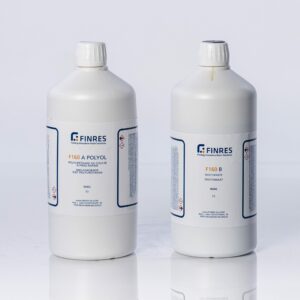Free delivery in Benelux until 10kg.
€ 7,50 – € 137,50 HTVA
A thixotropic agent is a liquid added to silicone to thicken the product.
Finsil 134 Thixo is a thickening agent that transforms silicone into a paste so that it is less fluid and can be applied with a spatula.
This thixo is ideal for vertical or ceiling applications, or for creating a thin membrane around the desired element.
Finsil 134 thixo is to be used with finsil 134 silicone. However, it can also be used with other polycondensation silicones. In this case, a small test should be carried out to ensure that the two components are compatible.
The thixotropic properties of polycondensation silicones are not compatible with those of polyaddition silicones, and vice versa.
For processing, it is important to follow the recommended order of addition, as this allows the catalyst to be fully dispersed in the liquid rubber before thixotropy is generated.
Color: transparent to pale yellow
Relative density at 25°C (gcm-3): 0.90
Viscosity at 25°C (mPa.s): 800
Service life: 12 months from production date
Mix the silicone with the corresponding amount of catalyst.
When the mixture is homogeneous, add between 3 and 5% of thixotropic agent. The more you add, the stronger the thixotropy (it’s not necessary to add a lot).
Allow to stand for a few minutes, then test on a vertical piece of cardboard or similar substrate before use to ensure that adequate thixotropy has been achieved.
If you like the texture, you can start working.
If you feel you need to “smooth” the surface, a little soap on your finger will do the trick.
The product should be stored in its original packaging between 15°C and 25°C.
Wear gloves.
Eye contact: rinse eyes thoroughly with running water. Consult a doctor if irritation persists.
Skin contact: Wash thoroughly with soap and water. Remove and wash contaminated clothing. Consult a doctor if you develop a rash.
Ingestion: do not induce vomiting unless told to do so by a doctor. Seek medical advice.





RUE J. VAN HOVE, 35 1950 KRAAINEM
Mo-Fr 8:30 - 12:00 / 13:00 - 17:00